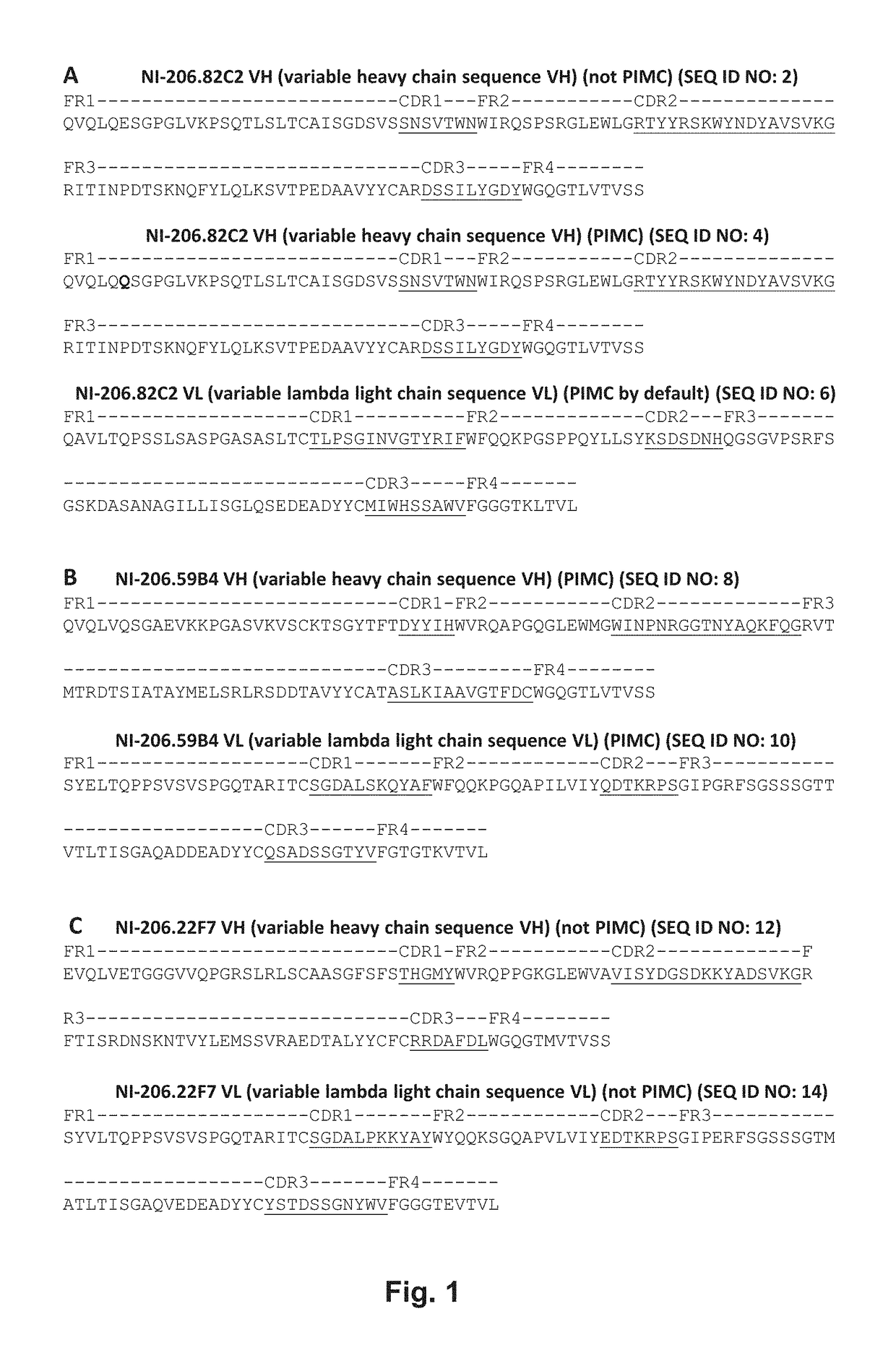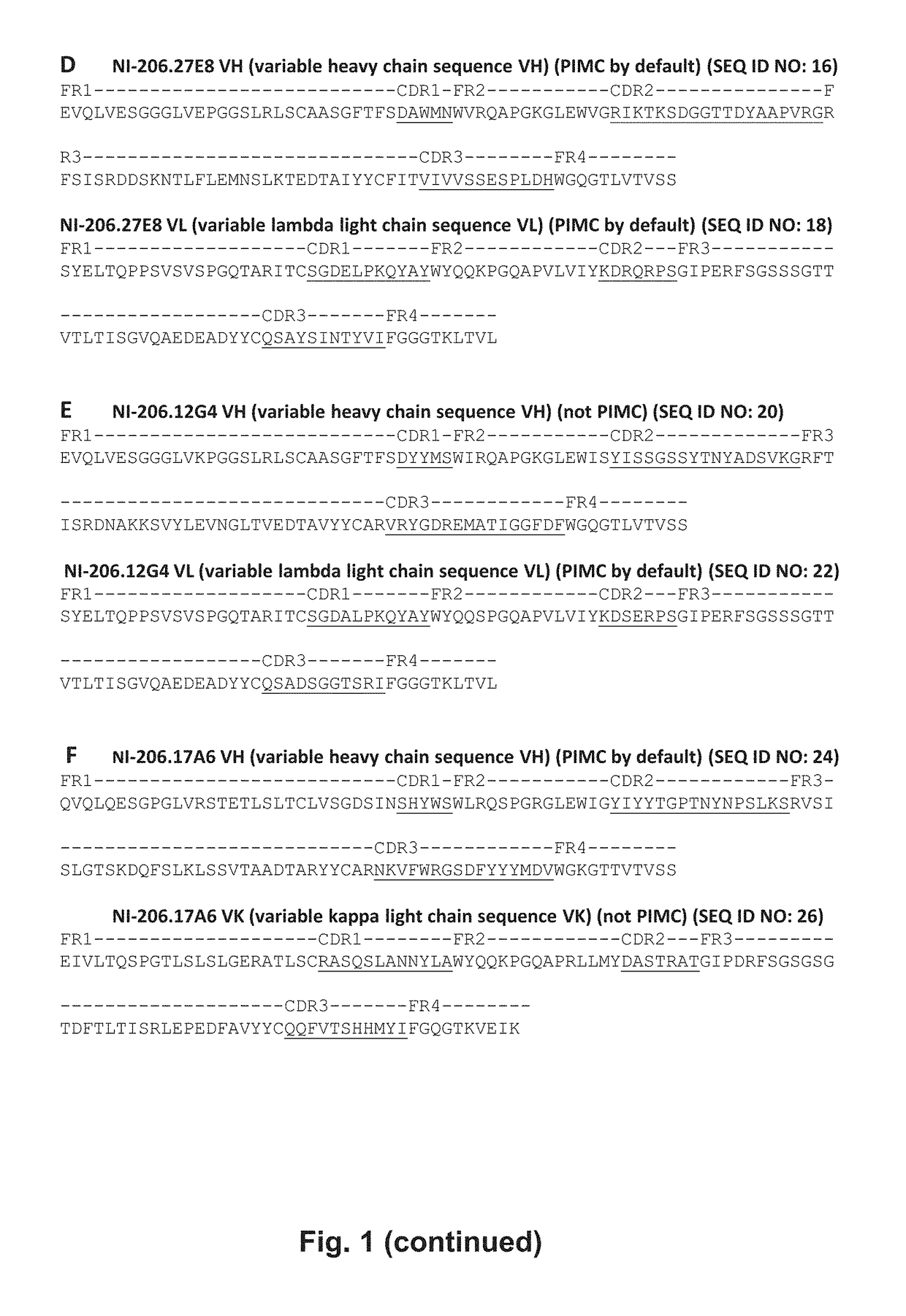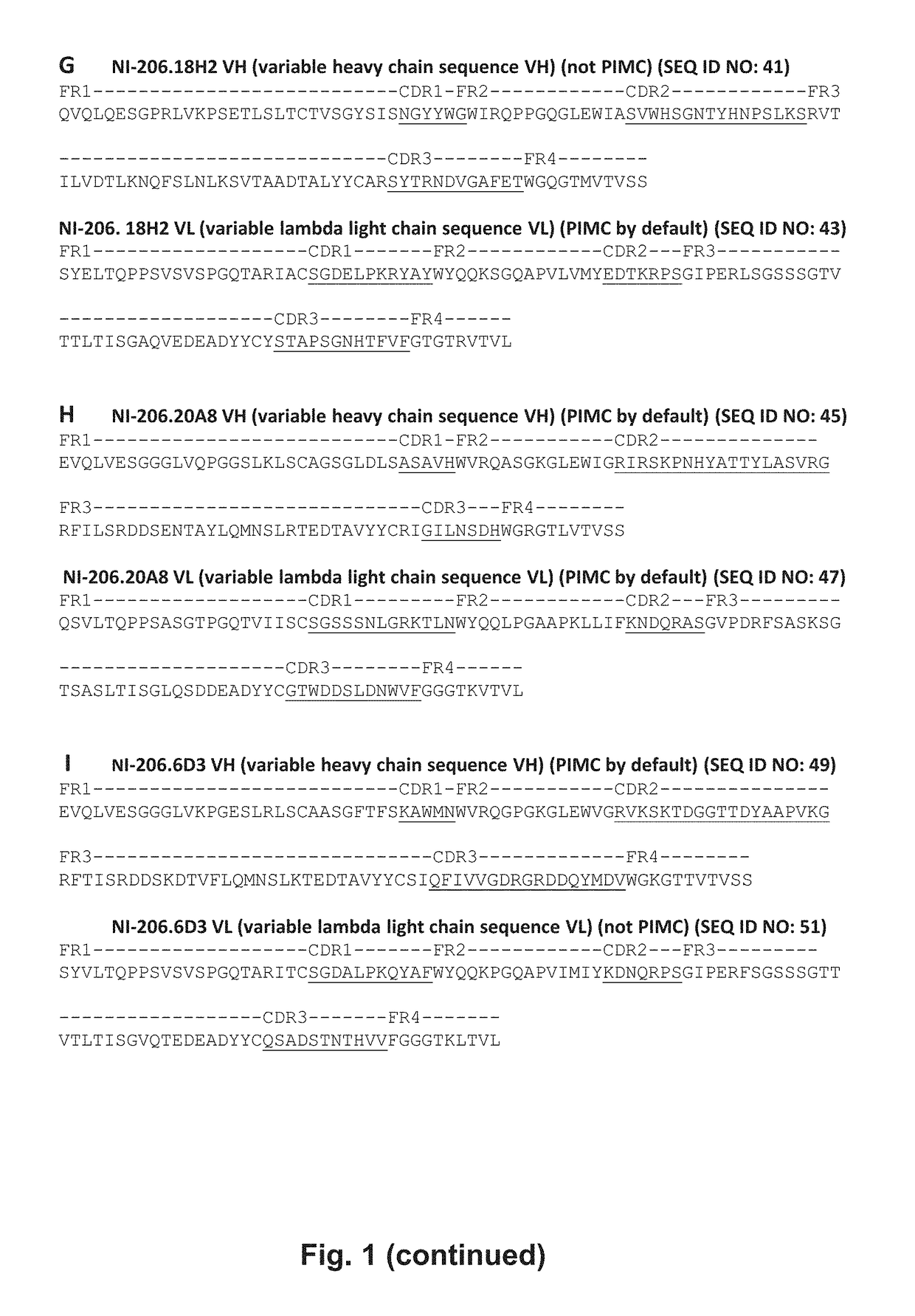Novel Anti-fibroblast activation protein (FAP) binding agents and uses thereof
a technology of fibroblast activation protein and binding agent, which is applied in the direction of ngf/tnf-superfamily, animal/human protein, enzymes, etc., to achieve the effect of enhancing tumor targeting and/or tumor selectivity
- Summary
- Abstract
- Description
- Claims
- Application Information
AI Technical Summary
Benefits of technology
Problems solved by technology
Method used
Image
Examples
example 1
pecificity of FAP Antibodies
[0491]ELISA assays were performed with varying antibody concentrations to validate the binding of the exemplary antibodies of the present invention to FAP and to be able to determine their half maximal effective concentration (EC50). For the exemplary recombinant human NI-206-18H2, NI-206-20A8, NI-206-6D3, ‘NI-206-14C5, NI-206-34C11, NI-206.82C2, NI-206.59B4, NI-206.22F7, NI-206.27E8, NI-206.12G4 and NI-206.17A6 antibodies, 96-well microplates (Costar, Corning, USA) were coated with FAP, with a mixture of the 3 peptides or with BSA (Sigma-Aldrich, Buchs, Switzerland) diluted to a concentration of 5 μg / ml in carbonate ELISA coating buffer (15 mM Na2CO3, 35 mM NaHCO3, pH 9.4) for the direct ELISA. For the capture ELISA, the microplates were coated with mouse anti-His monoclonal antibody (Clontech) diluted to a concentration of 3 μg / ml in PBS, the plates were then blocked, FAP or BSA were diluted to a concentration of 2 μg / ml in PBS and added to the plates t...
example 2
tion of NI-206.82C2 Binding Kinetics
[0493]To address NI-206.82C2 kinetics, recombinant human FAP (rhuFAP, Sino Biologicals, 10464-H07H) was amine-coupled onto a GLC sensor chip (Biorad #176-5011), leaving one channel unmodified to provide an additional reference surface. This was achieved by varying the concentration of the activation reagents used in each channel. Three activation solutions were prepared using a threefold serial dilution of a stock mixture containing 0.4 M EDC+0.1 M sulfo-NHS and injected for 360 s. Then rhuFAP at 2.5 μg / ml in coupling buffer (10 mM HEPES, 150 mM NaCl, 3.4 mM EDTA, 0.005% Tween 20, pH 5.2) was coupled for 1020 s at 25 μL / min. Excess reactive esters were blocked for 600 s with 1 M ethanolamine hydrochoride. This created uniform strips of rhuFAP spanning final immobilized levels of 700 RU. A five-fold serial dilution of rhuFAP starting at 16 μg / mL (106.7 nM) was injected for 400 s at 60 μL / min. A single injection delivered a full concentration series...
example 3
t of the Binding Epitope of the FAP Specific Antibodies
[0494]To determine the binding epitope of the exemplary NI-206.82C2 and NI-206.18H2 antibodies, binding analyses were performed with overlapping peptides mapping the entire sequences of FAP. Binding capacity of the antibodies was tested on these peptides spotted onto a nitrocellulose membrane (JPT Peptide Technologies, Berlin, Germany) and using HRP-conjugated donkey anti-human IgG secondary antibody (Jackson immunoResearch, Newmarket, UK) followed by detection of HRP activity (FIGS. 4A and C). In brief, epitope mapping was performed using scans of overlapping peptides. The entire sequences of FAP were synthesized as a total of 188 linear 15-mer peptides with an 11 amino acid overlap between individual peptides. Those peptides were spotted onto nitrocellulose membranes (JPT Peptide Technologies, Berlin, Germany). The membrane was activated for 5 min in methanol and washed in TBS for 10 min at RT. Non-specific binding sites were ...
PUM
| Property | Measurement | Unit |
|---|---|---|
| Fraction | aaaaa | aaaaa |
| Volume | aaaaa | aaaaa |
| Molar density | aaaaa | aaaaa |
Abstract
Description
Claims
Application Information
 Login to View More
Login to View More - R&D
- Intellectual Property
- Life Sciences
- Materials
- Tech Scout
- Unparalleled Data Quality
- Higher Quality Content
- 60% Fewer Hallucinations
Browse by: Latest US Patents, China's latest patents, Technical Efficacy Thesaurus, Application Domain, Technology Topic, Popular Technical Reports.
© 2025 PatSnap. All rights reserved.Legal|Privacy policy|Modern Slavery Act Transparency Statement|Sitemap|About US| Contact US: help@patsnap.com



